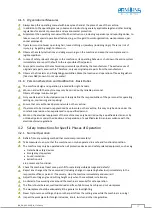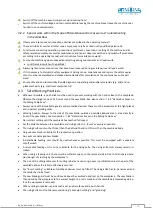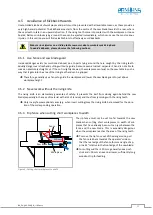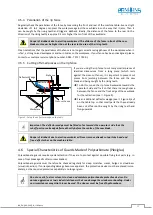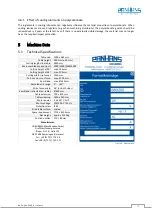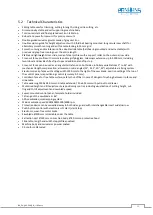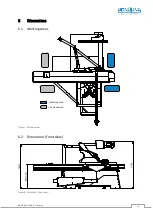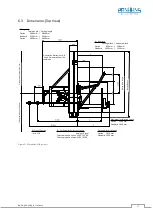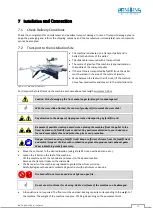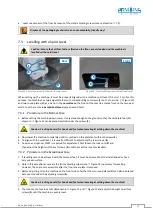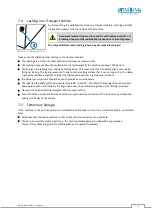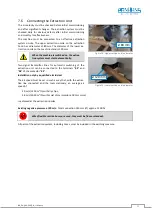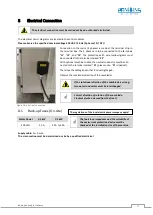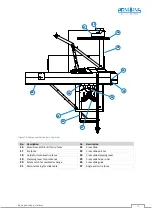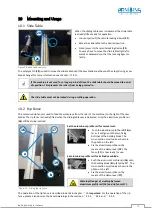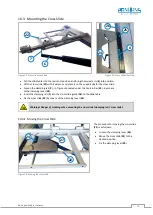
BA_PH_680-200_EN_11-22.docx
22
4.5.4
Parallelism of the rip fence
Regularly check the parallelism of the fence by measuring the front and rear of the machine table. Even a slight
deviation of 1 to 2 degrees can press the workpiece against the saw blade in such a way that it jams. Then it
can be caught by the rising teeth and trigger a kickback. Ideally, the distance of the fence to the rear (in the
direction of the rising teeth) is approx. 0.2 mm higher than in front of the saw blade.
Danger of kickback due to ejecting workpieces! The distance of the fence in front of the saw
blade must never be higher than at the rear in the area of the rising teeth.
Clear indications that the parallelism of the fence is no longer correct are sluggishness of the workpiece when it
is fed, a strong noise development and burn marks on the workpiece. If your fence has been misaligned, please
contact our customer service (phone number: 0049 - 7571 / 755-0).
4.5.5
Cutting off small pieces on the rip fence
Figure 5: Fixing the deflector wedge on the table
If you are using the rip fence to cut many smaller pieces of
identical dimensions from a long piece (which rests
against the cross-cut fence), it is important to prevent cut
pieces from jamming between the fence and the saw
blade and being caught by the rising teeth.
➔
To do this, move the rip fence backwards towards the
operator's side and fix it so that there is enough space
between the fence and the front edge of the saw blade
for the retraction (see
Figure 5).
➔
Fix an additional deflector wedge (see
Figure 5) auf
on the table top so that small parts that have already
been cut off cannot be caught by the rising teeth and
flung upwards.
Important: The deflector wedge must be fitted so far towards the operator's side that the
cut-off parts are already deflected shortly before the centre of the saw blade.
Danger of kickback due to ejecting workpieces! Never remove already cut parts by hand and
fix a deflector bar on the machine table.
4.6
Special Characteristics of Guards Made of Polycarbonate (Plexiglas)
Polycarbonate guards require special attention if they are to protect against possible flying tool parts (e.g. in
case of tool breakage of cutters or saw blades).
Polycarbonate guards must therefore be checked regularly for deep scratches, cracks, bulges or cloudiness
(visual inspection). If corresponding damage becomes apparent, the protective device must be replaced imme-
diately, as the required protective capability is no longer given.
Do not use oils, fuels or solvents to clean and maintain polycarbonate protective devices. Do
not use aggressive or toxic industrial cleaners that can damage the windows or bonding. Under
no circumstances may nitro thinner be used. The cleaner must be free of hydrocarbons.
Saw Blade
Rip Fence
Workpiece
Deflector Wedge
Cross-cut Fence
Retraction










